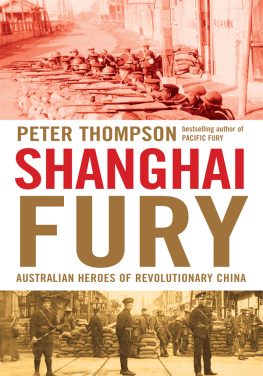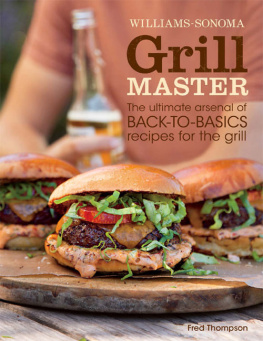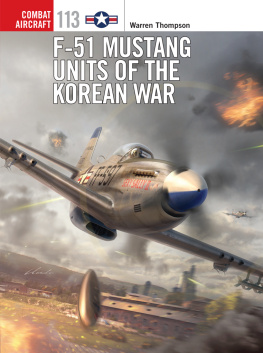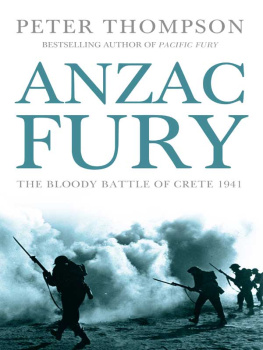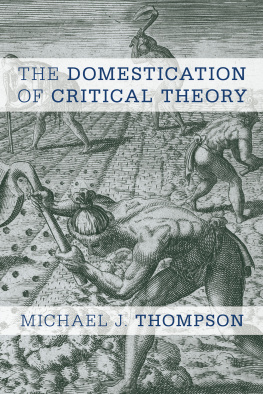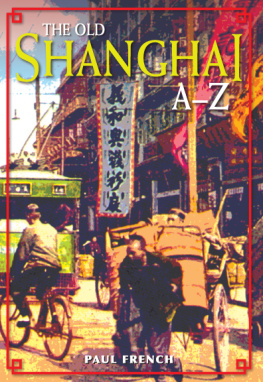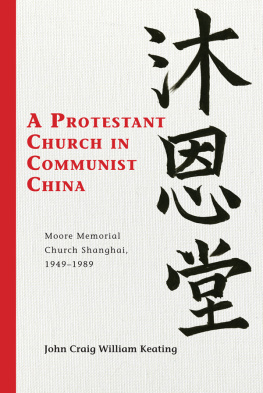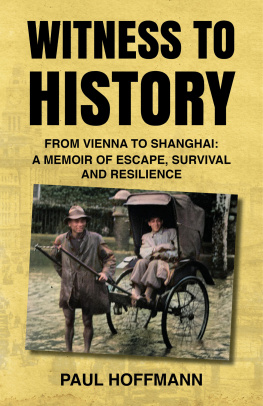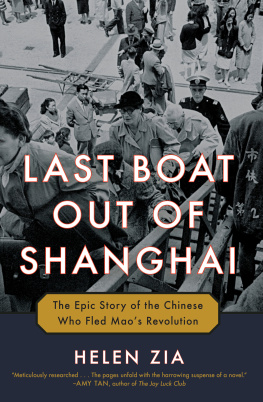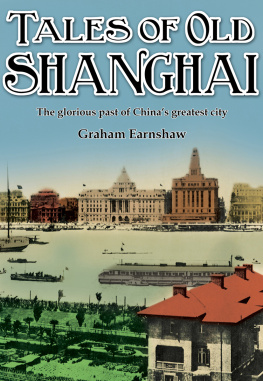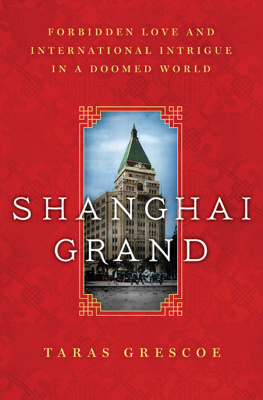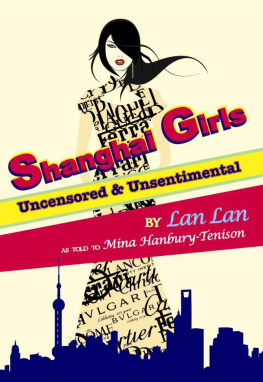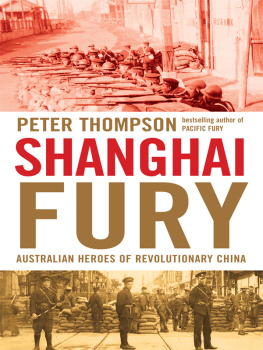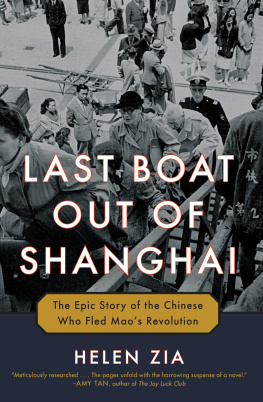About the Book
The Ching Dynasty had been swept away and Chinas great republican vision had become a reality. It was a unique situation: two Australians, George Ernest Morrison and William Henry Donald, had helped to topple a 2000-year-old empire and replace it with what would become the worlds biggest and most diverse republic.
Shanghai Fury, published for the 100th anniversary of the 1911 Chinese Revolution, places Australian voices and Australian characters at the heart of Chinas modern history.
No previous volume has covered the thrilling experiences of the many remarkable Australians caught up in the drama. George Morrison orchestrated the abdication of the Last Emperor, and therefore the end of the Ching Dynasty, while the Lithgow-born William Donald wrote the political manifesto of the first President of the Chinese Republic, Sun Yat-sen. And no group of Australians was closer to the crucible of revolution than the AustralianChinese family of the Sydney-born revolutionary Tse Tsan Tai.
Spanning the century between the Treaty of Nanking in 1842 and the declaration of the Peoples Republic of China in 1949, Shanghai Fury: Australian Heroes of Revolutionary China provides a panoramic view of the revolution from its turbulent origins in the Taiping Rebellion against the Manchu Dynasty to its violent aftermath in the monumental battles between Chiang Kai-shek (Jiang Jieshi), Mao Tse-tung (Mao Zedong) and the Japanese armed forces.
As in the other two books in the Fury Trilogy, Pacific Fury and Anzac Fury, Peter Thompson combines personal memories with combat action to produce a gripping narrative of extraordinary power and depth.

For Robert Macklin
Its 6 pm at M on The Bund, Shanghais famous Australian restaurant. The heat of the day has passed and dozens of diners have gathered on the rooftop terrace to watch the spectacular riverfront panorama unfold in the soft evening light.
There are few greater architectural contrasts than that between the geometric modernity of Pudong (formerly Pootung) across the river and the classical beauty of The Bund, remnants of a colonial era when the West held sway over the East for 100 years.
There could be no better place to begin a story about Australians in China than here. Ms founder Michelle Garnaut is from Melbourne and its corn-fed beef and the maitre d are from Queensland. Yet its doubtful if many of the Australians who patronise M are aware of other extraordinary Australian connections surrounding them.
Down below on the banks of the Whangpoo (now the Huangpu) River, George Morrison came ashore in 1894 as a 32-year-old traveller to take his first steps into Chinese history. It was here ten years later that his fellow journalist and friend W. H. Donald landed on his way to the Russo-Japanese War and returned with his wife and daughter in 1911 to take part in the Chinese Revolution later that year. Morrison orchestrated the abdication of the Last Emperor, while Donald wrote the political manifesto of Sun Yat-sen, first president of the Chinese Republic.
And it was from The Bund during the ensuing Chinese civil war that Basil Riley, son of the Archbishop of Perth, set off on his journey up the Yangtze, only to die at the hands of the troops of General Feng Yu-hsiang, the so-called Christian General.
To the left of the M vantage point is the old Hong Kong & Shanghai Bank building, the Honkers & Shankers, where Gordon Bowden had his office as Australian trade commissioner. Slightly closer to Nanking Road is the rooftop of the North-China Daily News building where Bowden and his six-year-old son Ivor watched the Chinese district of Chapei burning during the Japanese invasion of 1932.
From that same rooftop five years later William Arthur Buzz Farmer saw the carnage of Bloody Saturday when a bomb exploded between the Cathay and Palace hotels at the intersection of Nanking Road and The Bund, killing hundreds of people at the start of the Sino-Japanese War (193745), known in China as the War of Resistance.
To the right of M is Frenchtown and the Chinese district of Nantao where Harold John Timperley helped Father Jacquinot de Besange, a heroic French priest, set up a safety zone that rescued thousands of Chinese refugees from the fighting. Just around the corner is the wireless and cable office where Timperley filed his reports on the Rape of Nanking when a similar safety zone failed to save thousands of lives.
And it was in Room 106 of the Palace Hotel that the treacherous trio of collaborators Alan Willoughby Raymond, Wynette Cecilia McDonald and John Joseph Holland launched the renegade Independent Australia League in 1942. At the fall of Singapore, when 14,000 members of the 2nd AIF were taken prisoner, Wynette McDonald drove down The Bund in an open-top car with a Japanese officer to celebrate the Japanese victory.
Indeed, Shanghai is a city defined by war. It is the dragons head of the Yangtze, the starting point of a long and dangerous journey from Chinas imperial past to its astonishing present, a journey that culminates on 10 October 2011 in the 100th anniversary of the Chinese Revolution.
The Xinhai, or Double Tenth, Revolution of 1911 hailed by Lenin as the awakening of Asia created the first democratic republic in North Asia and triggered other movements for reform and self-determination in the region. All too quickly, though, the hopes of Sun Yat-sen and his fellow revolution- aries were destroyed by the warlord regime of President Yuan Shi-kai.
Then in 1927 the Nationalists conquered South China, butchered thousands of Communists in Shanghai birthplace of the Chinese Communist Party and established a party-republic under the dictatorship of Chiang Kai-shek (Jiang Jieshi). The final phase of the revolutionary movement took place in 1949 when the Communists recaptured Shanghai and unified mainland China in the Peoples Republic of China under Chairman Mao Tse-Tung (Mao Zedong).
Maos triumph heralded three decades of disastrous economic and political repression, which effectively sealed China off from the Western world. Only after the Great Helmsmans death in 1976 and the subsequent fall of the Gang of Four did Deng Xiaoping rise to the party leadership and begin the process of opening up the Chinese economy.
In the mid-1980s, his socialism with Chinese characteristics gave free rein to the commercial and entrepreneurial instincts of his compatriots. The Bamboo Curtain was pushed aside and the sleeping giant awoke with a roar that echoed around the world.
In August 2010, China eclipsed Japan as the worlds second largest economy. At the current rate of growth, she will pass the United States as the worlds largest economy by 2020. The importance to Australias continuing prosperity through trade is self-evident.
The Bund, once the symbol of Britains dominion over the Yangtze Valley, is a now a multi-lane highway called Zhongshan No. 1 Road East. Along its elegant curves the designer logos of Cartier, Zegna and Dolce & Gabbana have replaced angry Maoist wall posters denouncing American imperialism, while in the chocolate-and-white art deco Palace Hotel time now moves to an Omega beat.

